Investigation of the Potential Use of Calcium Alginate Capsules for Self-Healing in Porous Asphalt Concrete
Abstract
1. Introduction
2. Experimental Method
2.1. Materials
2.1.1. Calcium-Alginate Capsules
2.1.2. Porous Asphalt Mix and Test Specimens
2.2. Testing Methods
2.2.1. XCT
2.2.2. ITSM Tests
2.2.3. SCB Tests
- KIc = Fracture Toughness (Pa·m1/2)
- P = Applied load (N)
- r = Specimen radius (m)
- t = Specimen thickness (m)
- YIc = Normalised Stress intensity factor,
- GIc = Fracture Energy (J/m2),
- Wf = Work of the fracture–area under the load displacement curve (J),
- P = Applied load (N),
- u = load line displacement (m),
- r = Specimen radius (m),
- t = Specimen thickness (m),
- a = Notch length (m).
2.2.4. Healing Efficiency Evaluation
- First, the initial peak load of the specimen were measured by the first SCB test;
- Second, the fractured specimen was spliced to close the fracture face and conditioned at 23 °C for 20 h on a plain surface. In order to create a constant confinement to ensure the close of cracked surfaces, the specimens were carefully wrapped with tape during the healing process;
- Subsequently, the second SCB test was performed to acquire the regained peak load of the specimen after healing. Afterwards, step 2 was repeated to perform another healing cycle following by the third SCB test.
- HI = the healing index (%),
- C1 = original peak load of the sample;
- Cx = fracture property after x cycles of healing.
3. Results and Discussion
3.1. XCT
3.2. Indirect Tensile Stiffness Modulus of Porous Asphalt Concrete
3.3. Fracture Face of the Porous Asphalt Specimens after the SCB Test
3.4. Fracture Properties of the Porous Asphalt Concrete with Capsules
3.4.1. Peak Load
3.4.2. Fracture Toughness
3.4.3. Fracture Energy
3.4.4. Healing Efficiency
4. Conclusions
- XCT is an effective method to analyze the structure and material distribution in porous asphalt mix. In XCT images, the presence of capsules in the porous asphalt mix demonstrate that calcium alginate capsules are able to survive asphalt manufacture process. The uniform distribution of capsules indicates a more comprehensive healing potential in porous asphalt;
- From the ITSM tests results, application of these calcium alginate capsules shows reinforcing effect by improving the stiffness modulus of the porous asphalt mix;
- After SCB tests, the presence of capsules on the fracture surfaces indicates that calcium alginate capsules are able to fracture upon the propagation of cracks. By this means, the encapsulated rejuvenator are able to release and heal the damage site;
- In the SCB testing and healing programme, samples with capsules are able to achieve a healing index that is 6% higher than the reference samples, which means addition of calcium alginate capsules improves the healing capacity of asphalt during the porous asphalt fracture and healing cycles;
- However, samples with capsules could only achieve a maximum healing index of 19% in the healing cycles, which indicates that if the damage beyond the healing capacity, the calcium alginate capsules are not able to recover all the loosing properties especially interlocking effect between aggregates;
- The fluorescent component of rejuvenator allows tracking of the transportation of rejuvenator, which in turn could evaluate the healing effect.
Author Contributions
Funding
Acknowledgments
Conflicts of Interest
References
- Bazin, P.; Saunier, J. Deformability, fatigue and healing properties of asphalt mixes. In Proceedings of the International Conference on the Structural Design of Asphalt Pavements, Ann Arbor, MI, USA, 7–11 August 1967. [Google Scholar]
- Sun, D.; Sun, G.; Zhu, X.; Guarin, A.; Li, B.; Dai, Z.; Ling, J. A comprehensive review on self-healing of asphalt materials: Mechanism, model, characterization and enhancement. Adv. Colloid Interface Sci. 2018, 256, 65–93. [Google Scholar] [CrossRef] [PubMed]
- Kim, Y.R.; Little, D.N.; Burghardt, R. SEM analysis on fracture and healing of sand-asphalt mixtures. J. Mater. Civ. Eng. 1991, 3, 140–153. [Google Scholar] [CrossRef]
- Xu, S.; García, A.; Su, J.; Liu, Q.; Tabaković, A.; Schlangen, E. Self-healing asphalt review: From idea to practice. Adv. Mater. Interfaces 2018, 5, 1800536. [Google Scholar] [CrossRef]
- García, Á.; Schlangen, E.; van de Ven, M.; van Vliet, D. Induction heating of mastic containing conductive fibers and fillers. Mater. Struct. 2011, 44, 499–508. [Google Scholar] [CrossRef]
- Liu, Q.; Schlangen, E.; van de Ven, M. Induction healing of porous asphalt concrete beams on an elastic foundation. J. Mater. Civ. Eng. 2012, 25, 880–885. [Google Scholar] [CrossRef]
- Gallego, J.; del Val, M.A.; Contreras, V.; Páez, A. Heating asphalt mixtures with microwaves to promote self-healing. Constr. Build. Mater. 2013, 42, 1–4. [Google Scholar] [CrossRef]
- Norambuena-Contreras, J.; Garcia, A. Self-healing of asphalt mixture by microwave and induction heating. Mater. Des. 2016, 106, 404–414. [Google Scholar] [CrossRef]
- Xu, S.; Tabaković, A.; Liu, X.; Schlangen, E. Calcium alginate capsules encapsulating rejuvenator as healing system for asphalt mastic. Constr. Build. Mater. 2018, 169, 379–387. [Google Scholar] [CrossRef]
- García, Á.; Schlangen, E.; van de Ven, M.; Sierra-Beltrán, G. Preparation of capsules containing rejuvenators for their use in asphalt concrete. J. Hazard. Mater. 2010, 184, 603–611. [Google Scholar] [CrossRef] [PubMed]
- Su, J.-F.; Qiu, J.; Schlangen, E. Stability investigation of self-healing microcapsules containing rejuvenator for bitumen. Polym. Degrad. Stab. 2013, 98, 1205–1215. [Google Scholar] [CrossRef]
- Tabaković, A.; Post, W.; Cantero, D.; Copuroglu, O.; Garcia, S.; Schlangen, E. The reinforcement and healing of asphalt mastic mixtures by rejuvenator encapsulation in alginate compartmented fibres. Smart Mater. Struct. 2016, 25, 084003. [Google Scholar] [CrossRef]
- Xu, S.; Tabaković, A.; Liu, X.; Schlangen, E. Preparation of calcium alginate capsules and the application in asphalt mastic. In Proceedings of the 6th International Conference on Self-Healing Materials, Friedrichshafen, Germany, 25–28 June 2017. [Google Scholar]
- Van Der Zwan, J.T.; Goeman, T.; Gruis, H.; Swart, J.; Oldenburger, R. Porous asphalt wearing courses in the Netherlands: State of the art review. Transp. Res. Rec. 1990, 1265, 95–110. [Google Scholar]
- McDaniel, R.; Thornton, W. Field evaluation of a porous friction course for noise control. In Proceedings of the Annual Meeting of the Transportation Research Board, Washington, DC, USA, 9–13 January 2005. [Google Scholar]
- Bolzan, P.; Nicholls, J.; Huber, G. Searching for superior performing porous asphalt wearing courses. In Proceedings of the 80th Transportation Research Board Annual Meeting, Washington DC, USA, 7–11 January 2001. [Google Scholar]
- Pasetto, M.; Baldo, N. Comparative performance analysis of bituminous mixtures with EAF steel slags: A laboratory evaluation. In Proceedings of the 2008 Global Symposium on Recycling, Waste Treatment and Clean Technology, Cancun, Mexico, 12–15 October 2008; pp. 565–570. [Google Scholar]
- Kim, H.; Sokolov, K.; Poulikakos, L.; Partl, M. Fatigue evaluation of porous asphalt composites with carbon fiber reinforcement polymer grids. Transp. Res. Re. J. Transp. Res. Board 2009, 2116, 108–117. [Google Scholar] [CrossRef]
- Klomp, A. Life Period of Porous Asphalt; Dutch Road and Hydraulic Engineering Institute Report: Rijkswaterstaat, The Netherlands, 1996. [Google Scholar]
- Hagos, E.T. The Effect of Aging on Binder Properties of Porous Asphalt Concrete. Ph.D. Thesis, Delft University of Technology, Delft, The Netherlands, 2008. [Google Scholar]
- Liu, Q.; García, Á.; Schlangen, E.; van de Ven, M. Induction healing of asphalt mastic and porous asphalt concrete. Constr. Build. Mater. 2011, 25, 3746–3752. [Google Scholar] [CrossRef]
- Tabaković, A.; Schuyffel, L.; Karač, A.; Schlangen, E. An evaluation of the efficiency of compartmented alginate fibres encapsulating a rejuvenator as an asphalt pavement healing system. Appl. Sci. 2017, 7, 647. [Google Scholar] [CrossRef]
- Bituminous Mixtures. Test Methods for Hot Mix Asphalt, Part 26: Stiffness; EN 12697-26; CEN: Brussel, Belgium, 2004. [Google Scholar]
- Bituminous Mixtures. Test Methods for Hot Mix Asphalt, Part 44: Crack Propagation by Semi-Circular Bending Test; EN 12697-44; CEN: Brussel, Belgium, 2010. [Google Scholar]

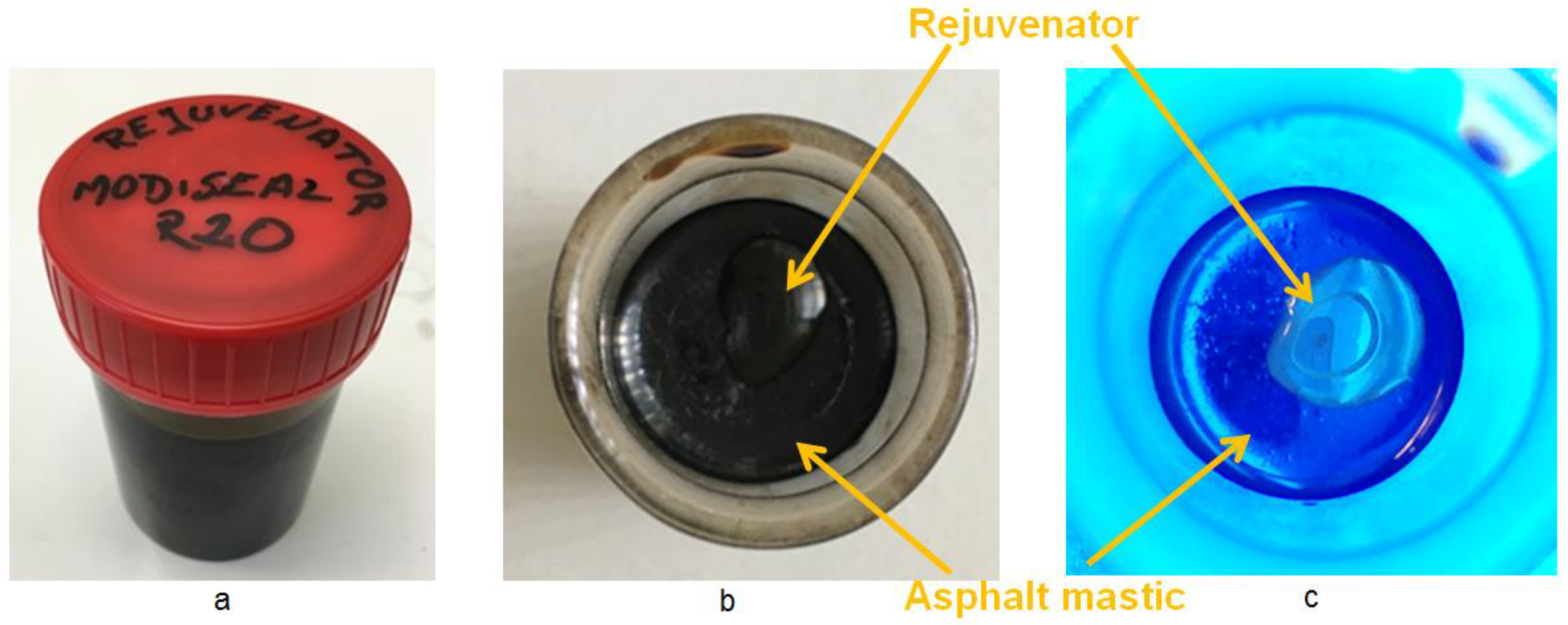
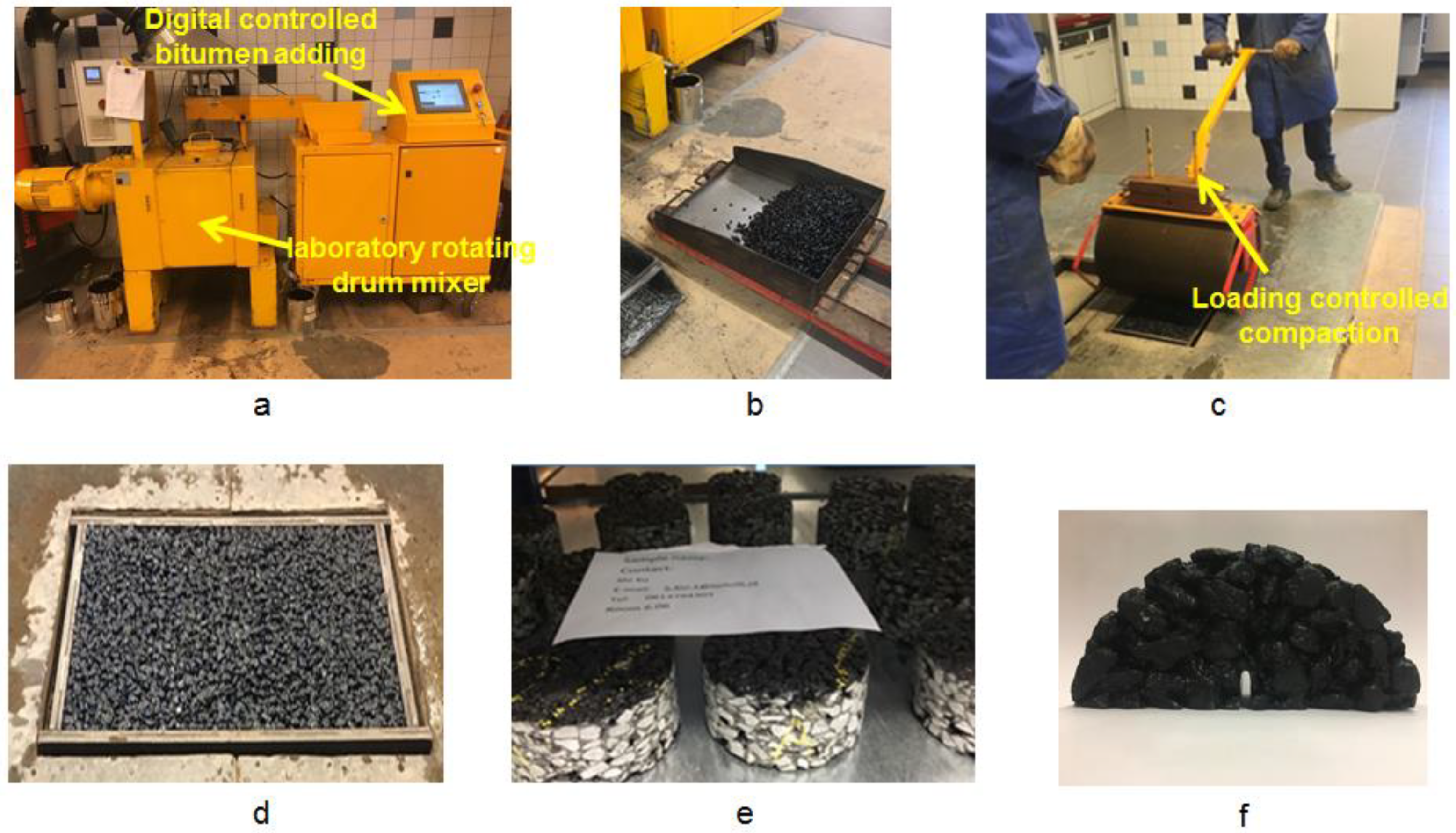
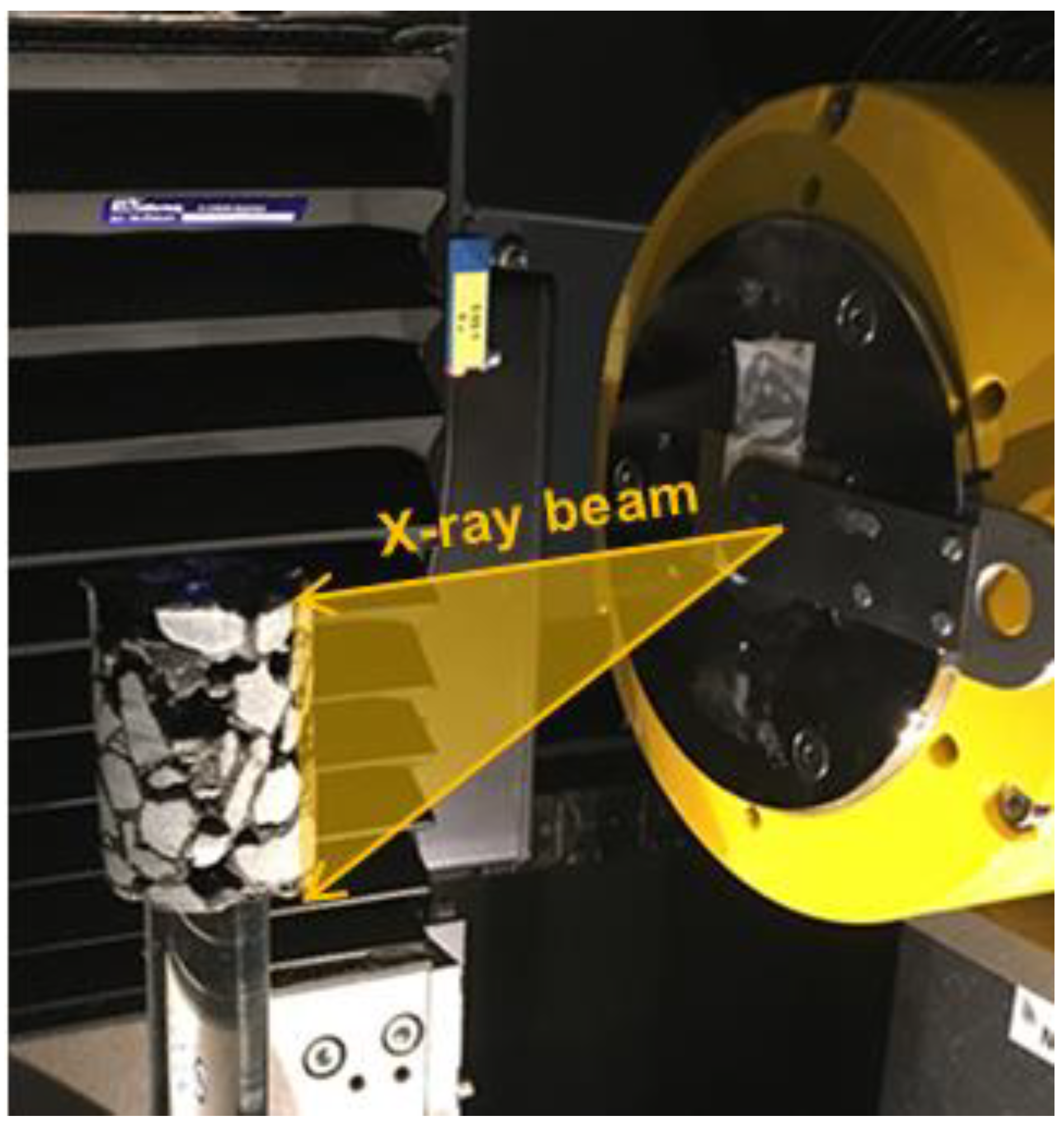
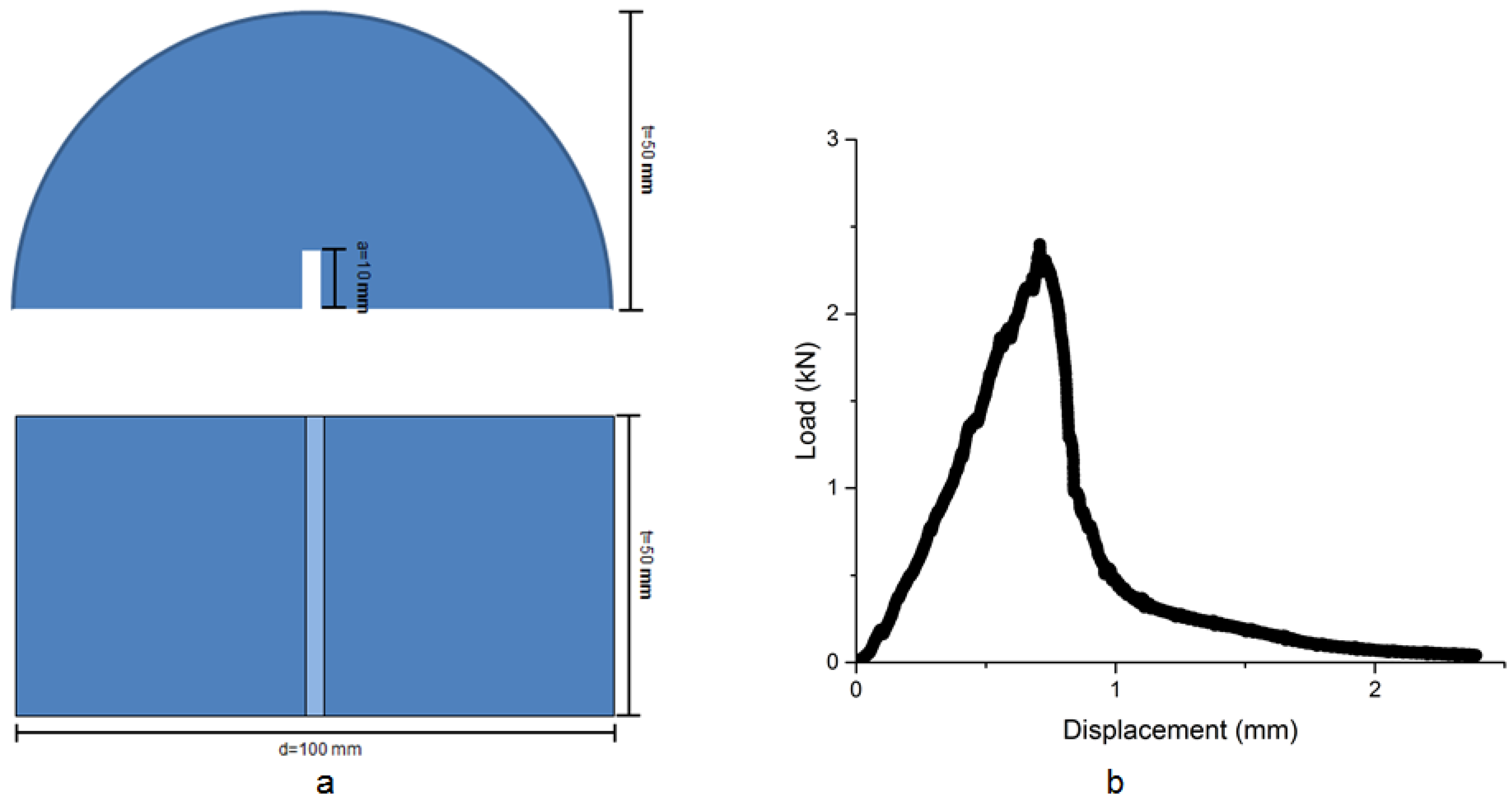
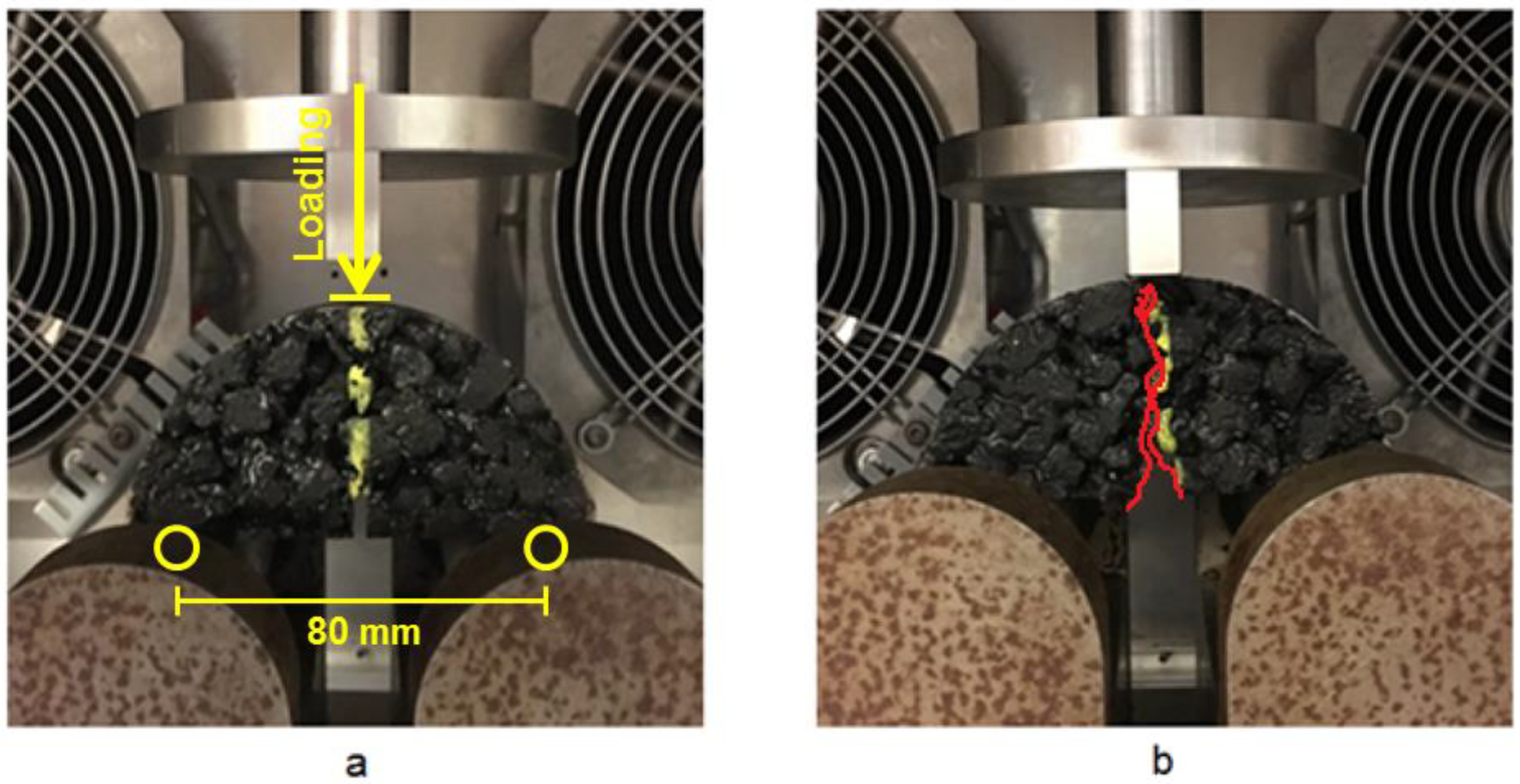
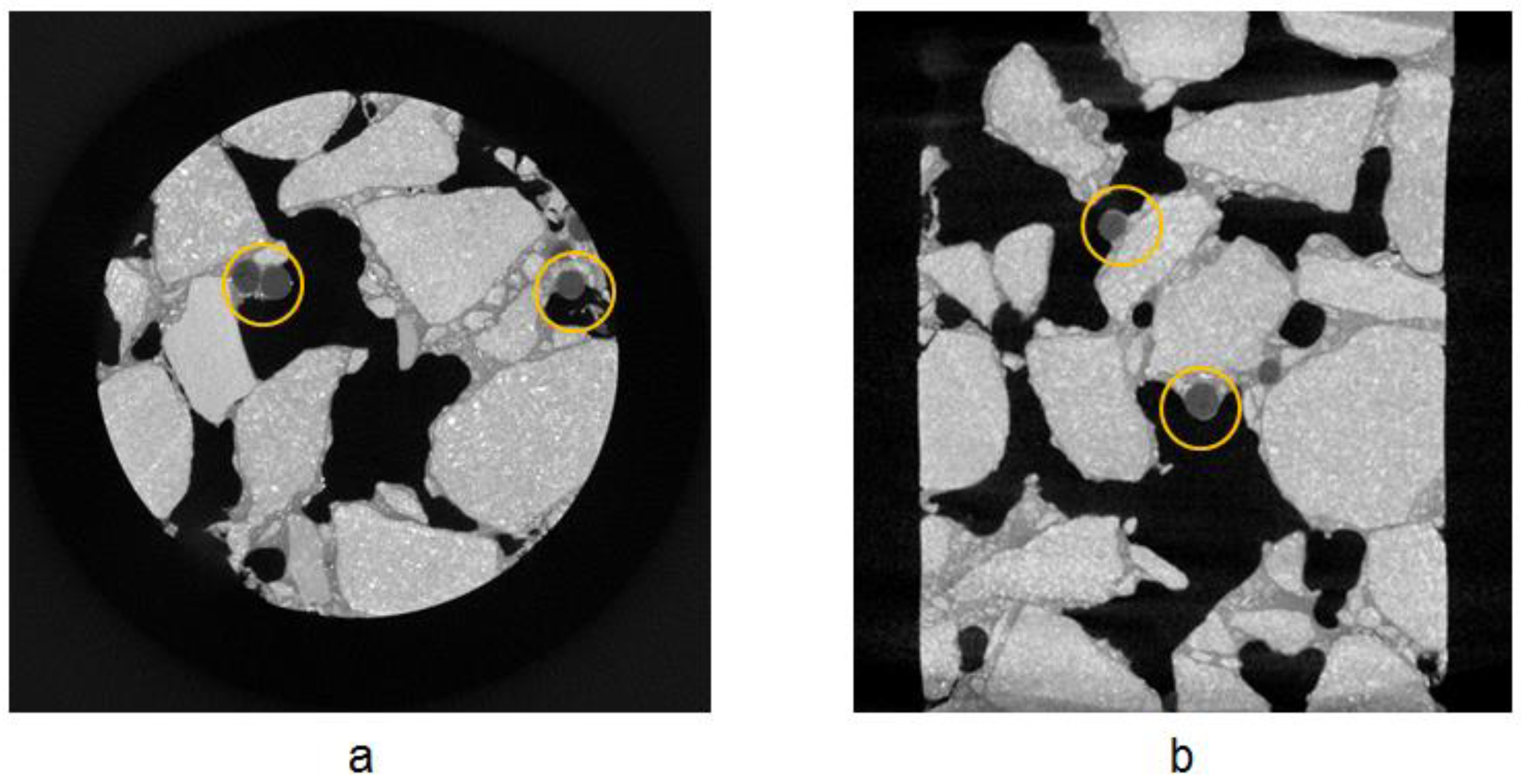
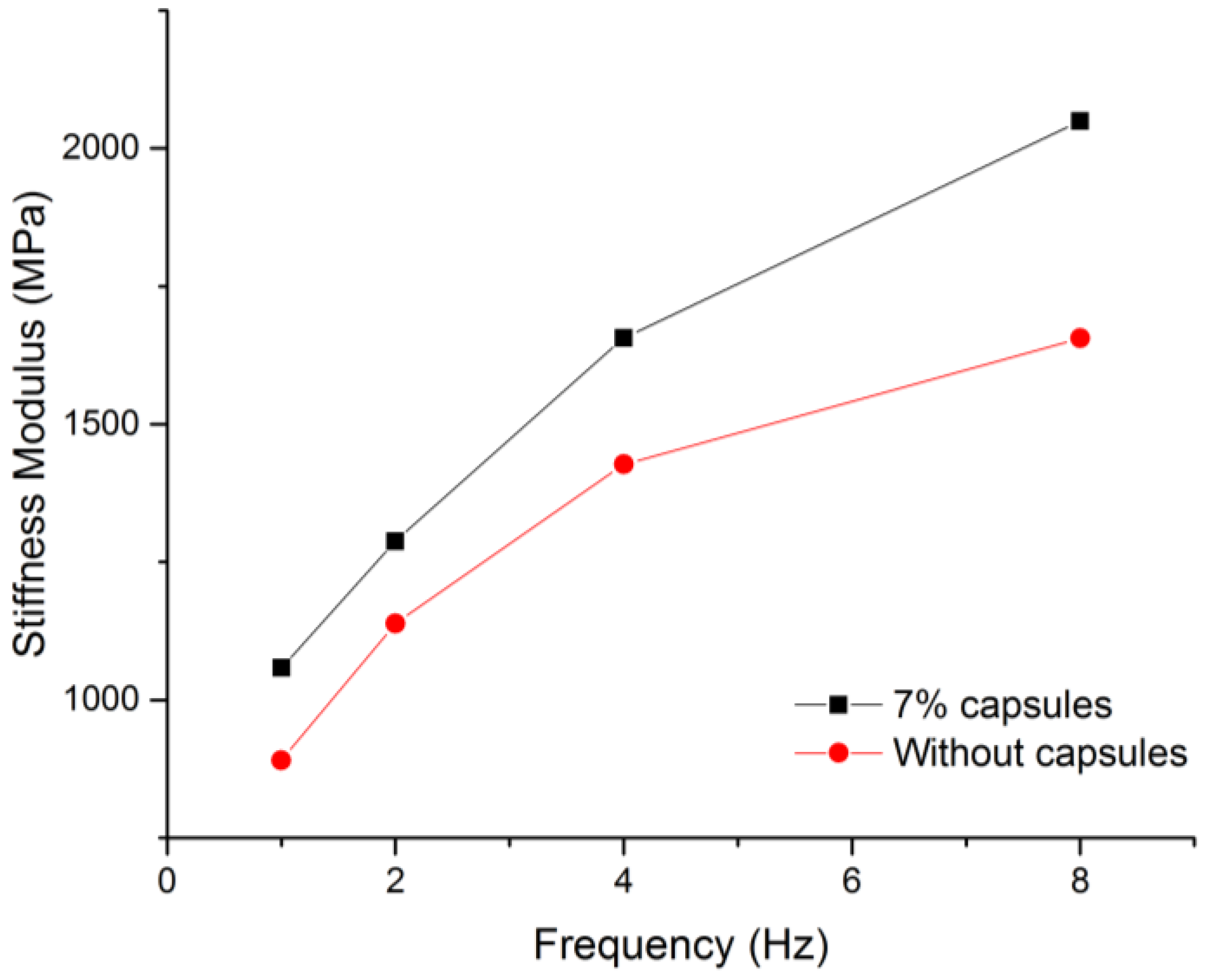
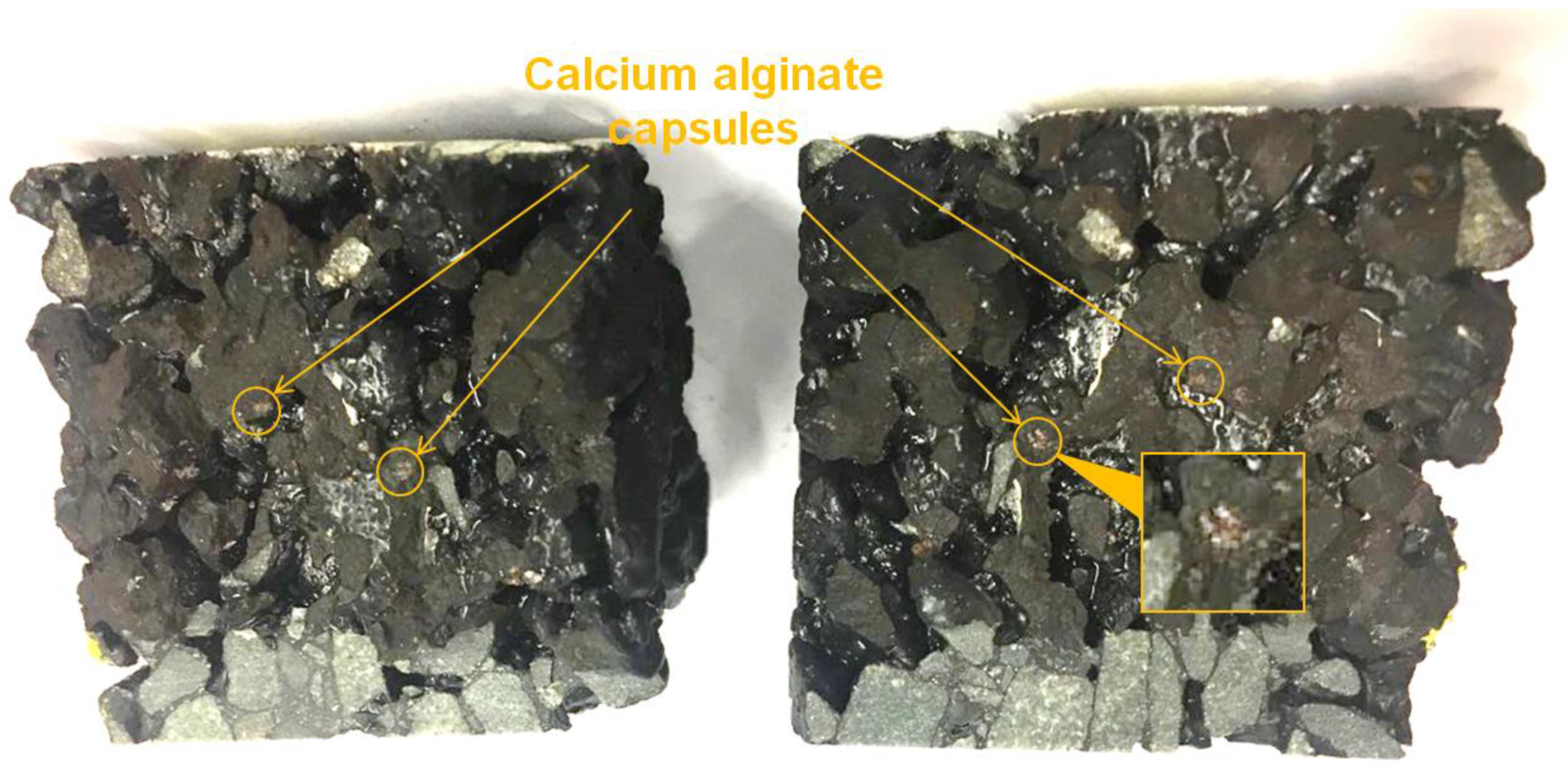
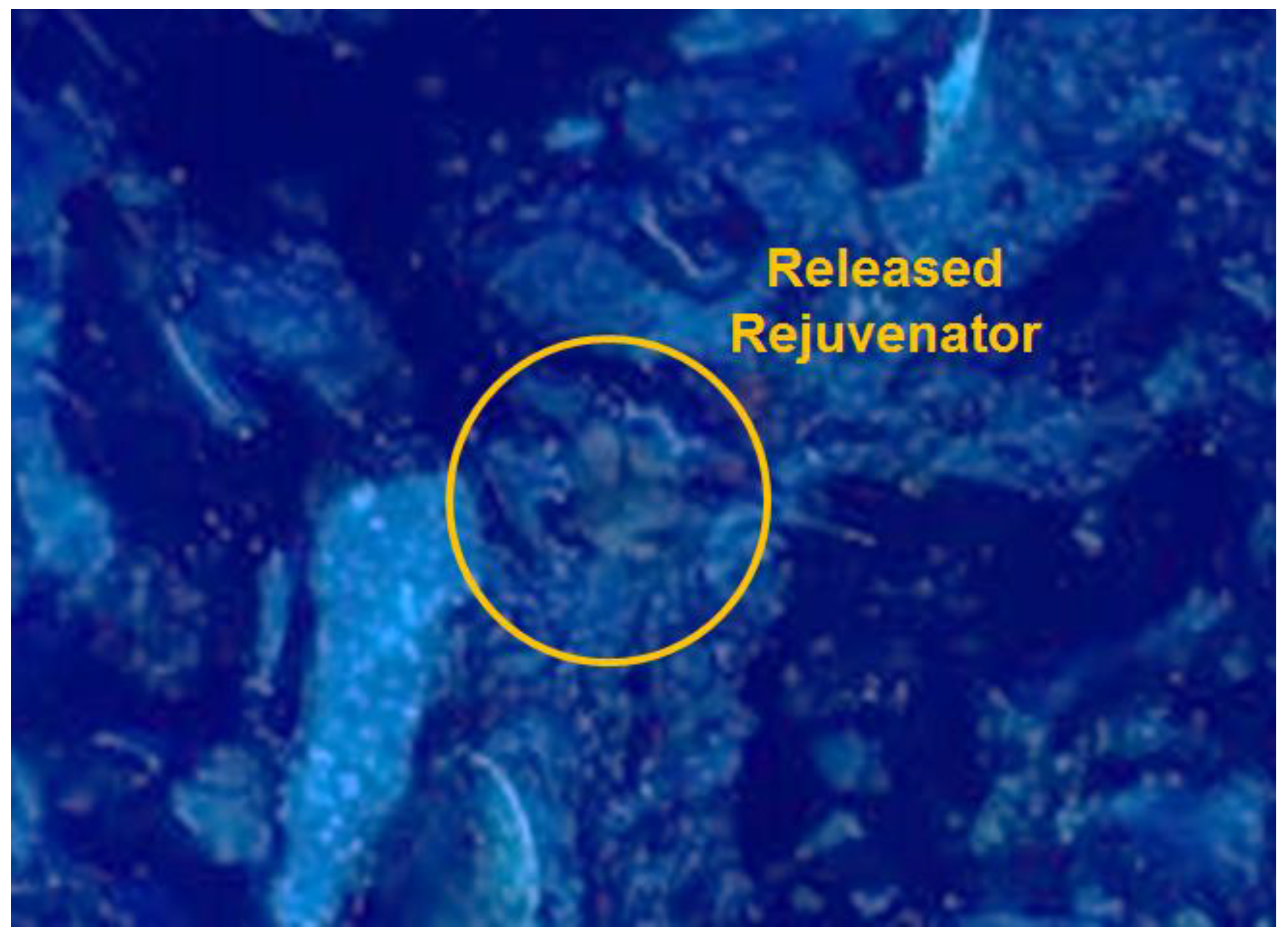
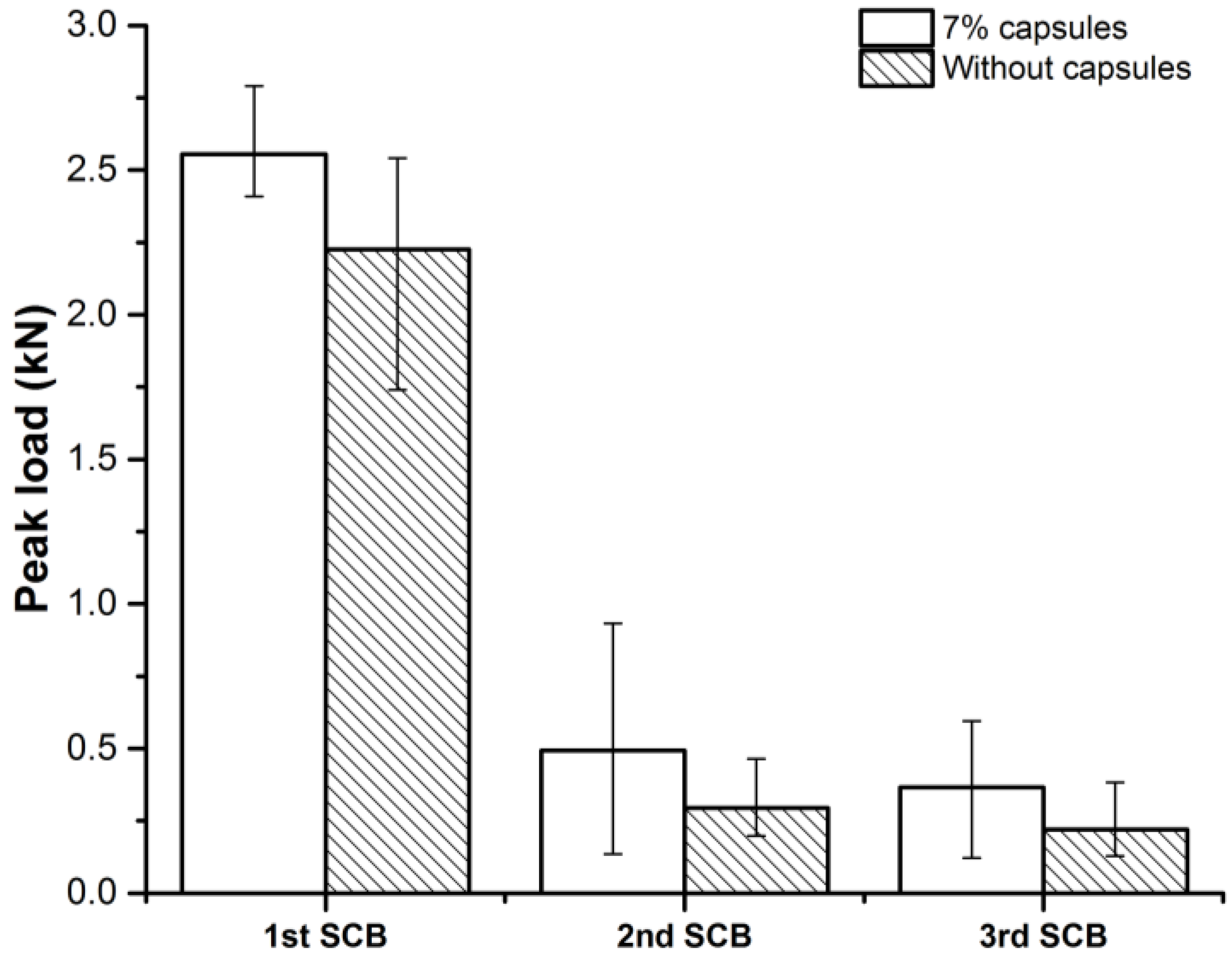
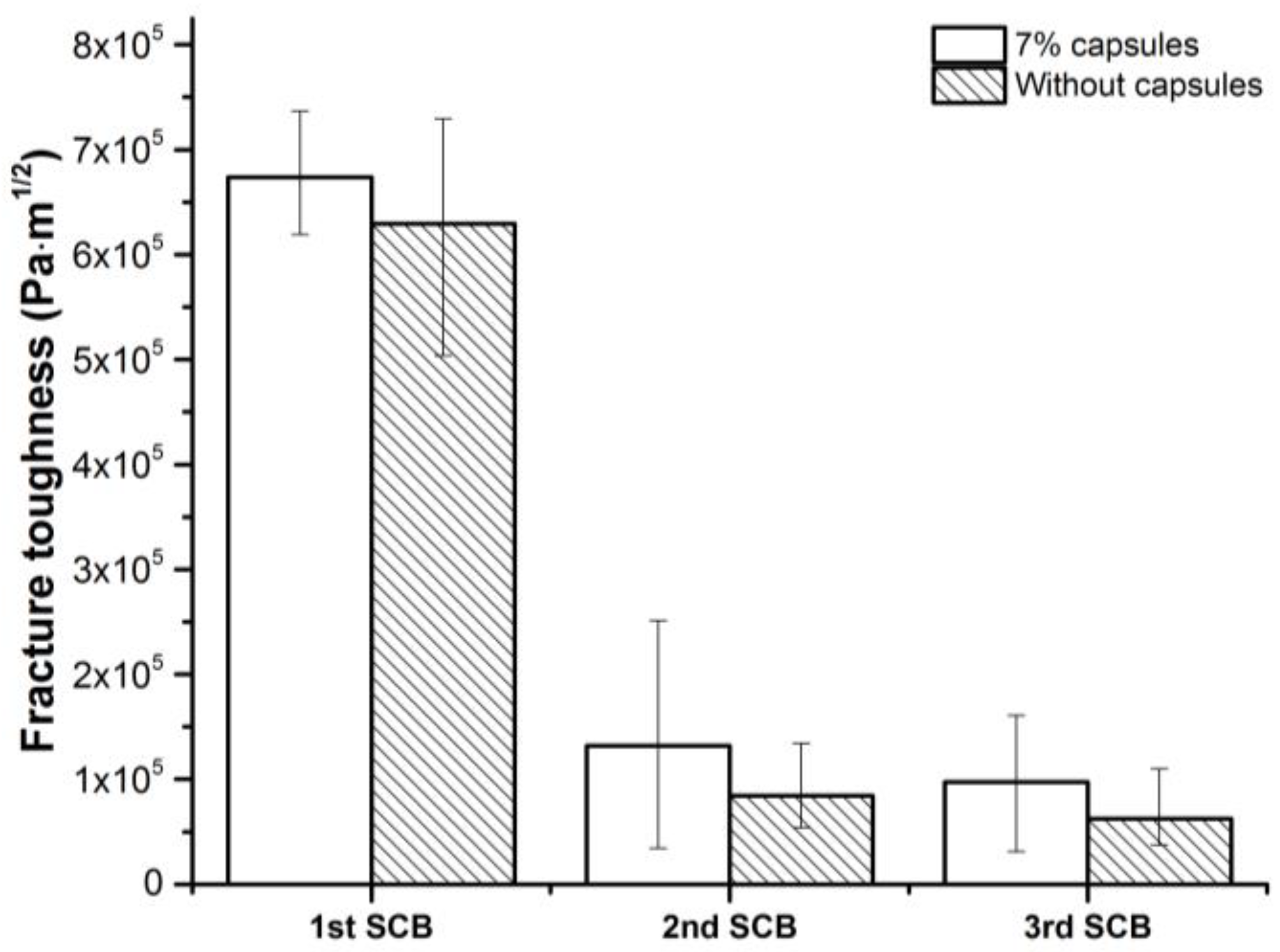
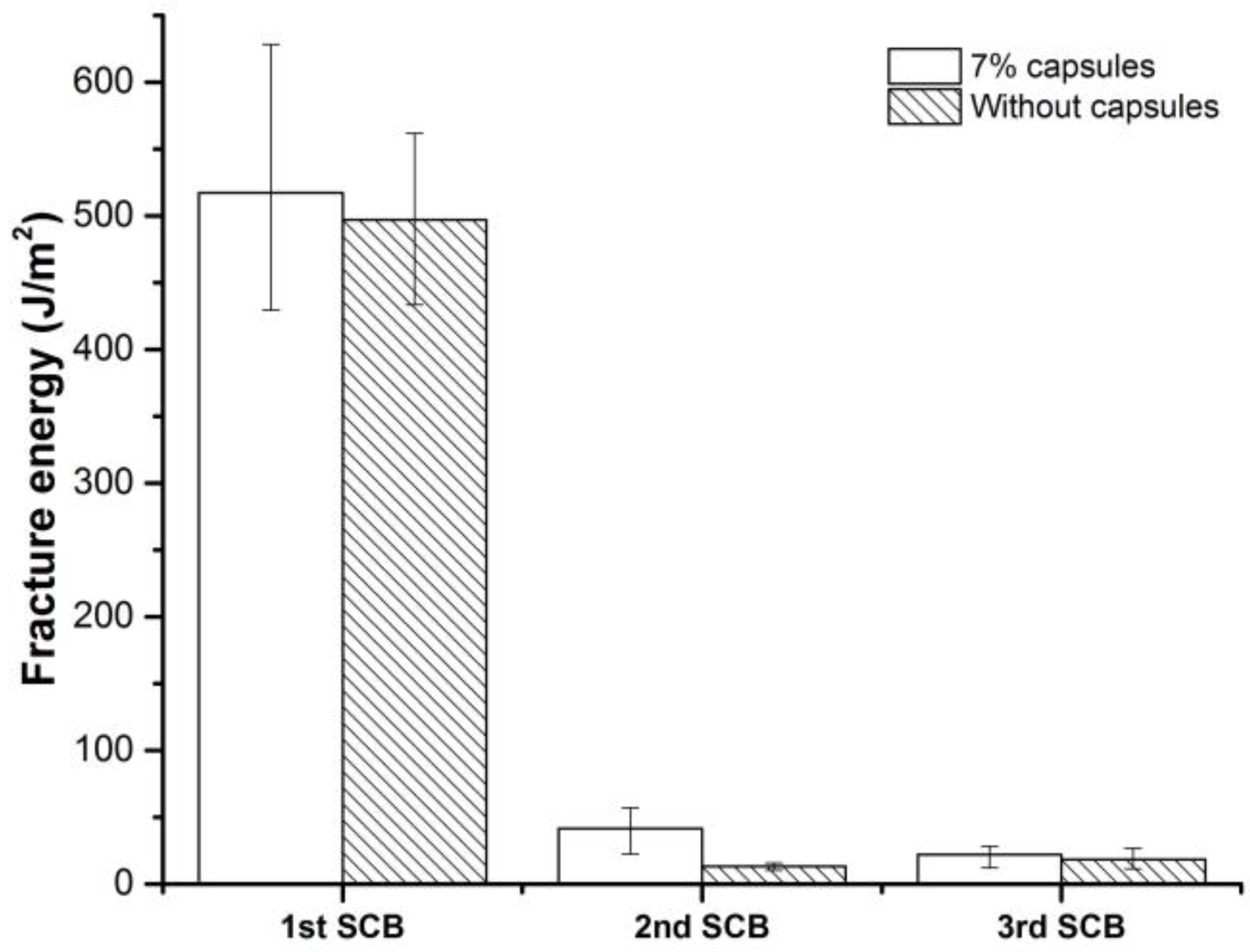
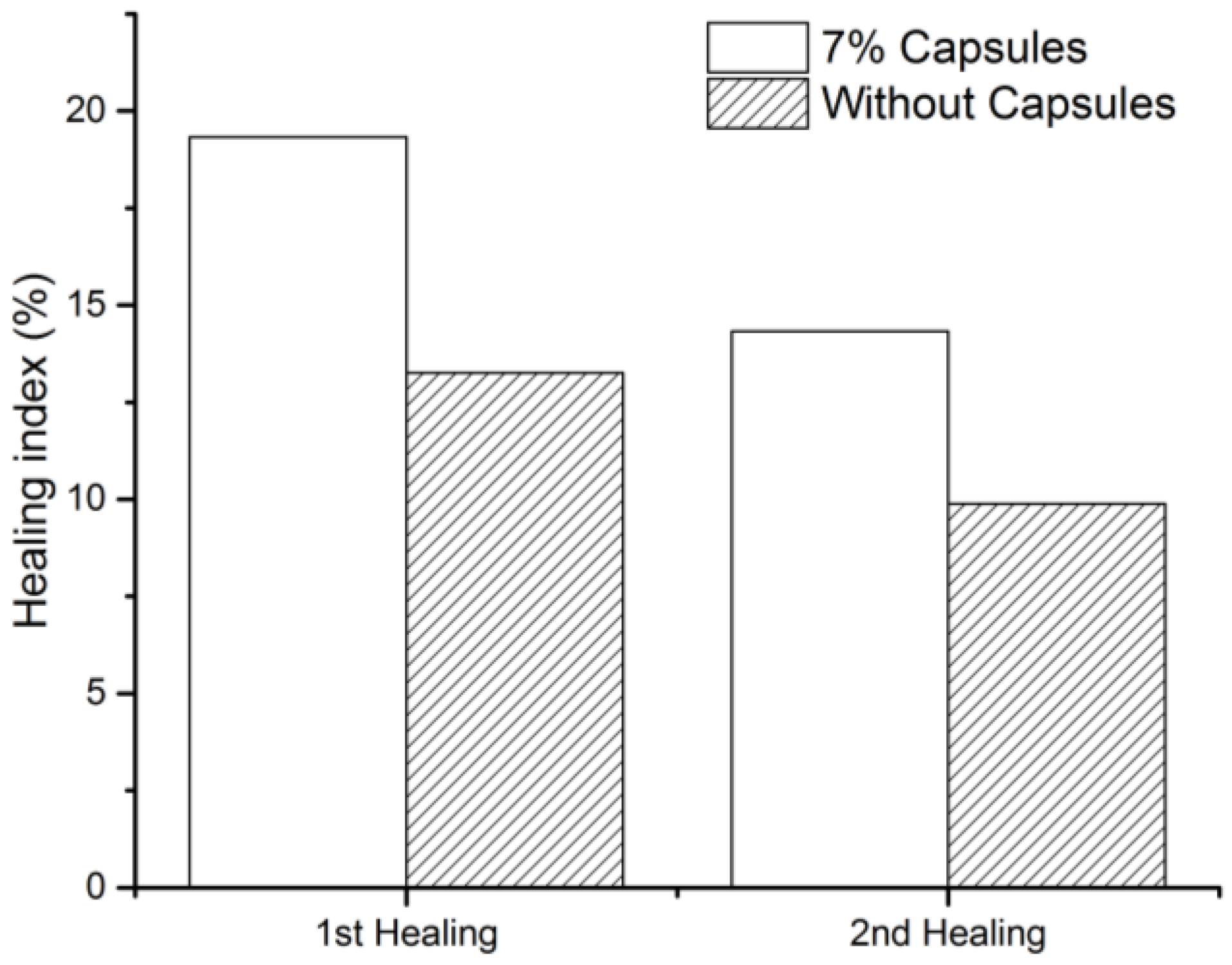
| Mix Constituent | % Content in Mix | |
|---|---|---|
| 7% Capsules | Without Capsules | |
| 16 mm | 8.5 | 8.5 |
| 11.2 mm | 66.1 | 66.1 |
| 8 mm | 8.5 | 8.5 |
| 5.6 mm | 1.9 | 1.9 |
| 2 mm | 6.9 | 6.9 |
| 500 μm | 2.2 | 2.2 |
| 180 μm | 0.7 | 0.7 |
| 125 μm | 0.7 | 0.7 |
| 63 μm | 4.5 | 4.5 |
| Bitumen (70/100) | 4.092 | 4.4 |
| Capsules | 0.363 | 0 |
© 2019 by the authors. Licensee MDPI, Basel, Switzerland. This article is an open access article distributed under the terms and conditions of the Creative Commons Attribution (CC BY) license (http://creativecommons.org/licenses/by/4.0/).
Share and Cite
Xu, S.; Liu, X.; Tabaković, A.; Schlangen, E. Investigation of the Potential Use of Calcium Alginate Capsules for Self-Healing in Porous Asphalt Concrete. Materials 2019, 12, 168. https://doi.org/10.3390/ma12010168
Xu S, Liu X, Tabaković A, Schlangen E. Investigation of the Potential Use of Calcium Alginate Capsules for Self-Healing in Porous Asphalt Concrete. Materials. 2019; 12(1):168. https://doi.org/10.3390/ma12010168
Chicago/Turabian StyleXu, Shi, Xueyan Liu, Amir Tabaković, and Erik Schlangen. 2019. "Investigation of the Potential Use of Calcium Alginate Capsules for Self-Healing in Porous Asphalt Concrete" Materials 12, no. 1: 168. https://doi.org/10.3390/ma12010168
APA StyleXu, S., Liu, X., Tabaković, A., & Schlangen, E. (2019). Investigation of the Potential Use of Calcium Alginate Capsules for Self-Healing in Porous Asphalt Concrete. Materials, 12(1), 168. https://doi.org/10.3390/ma12010168








